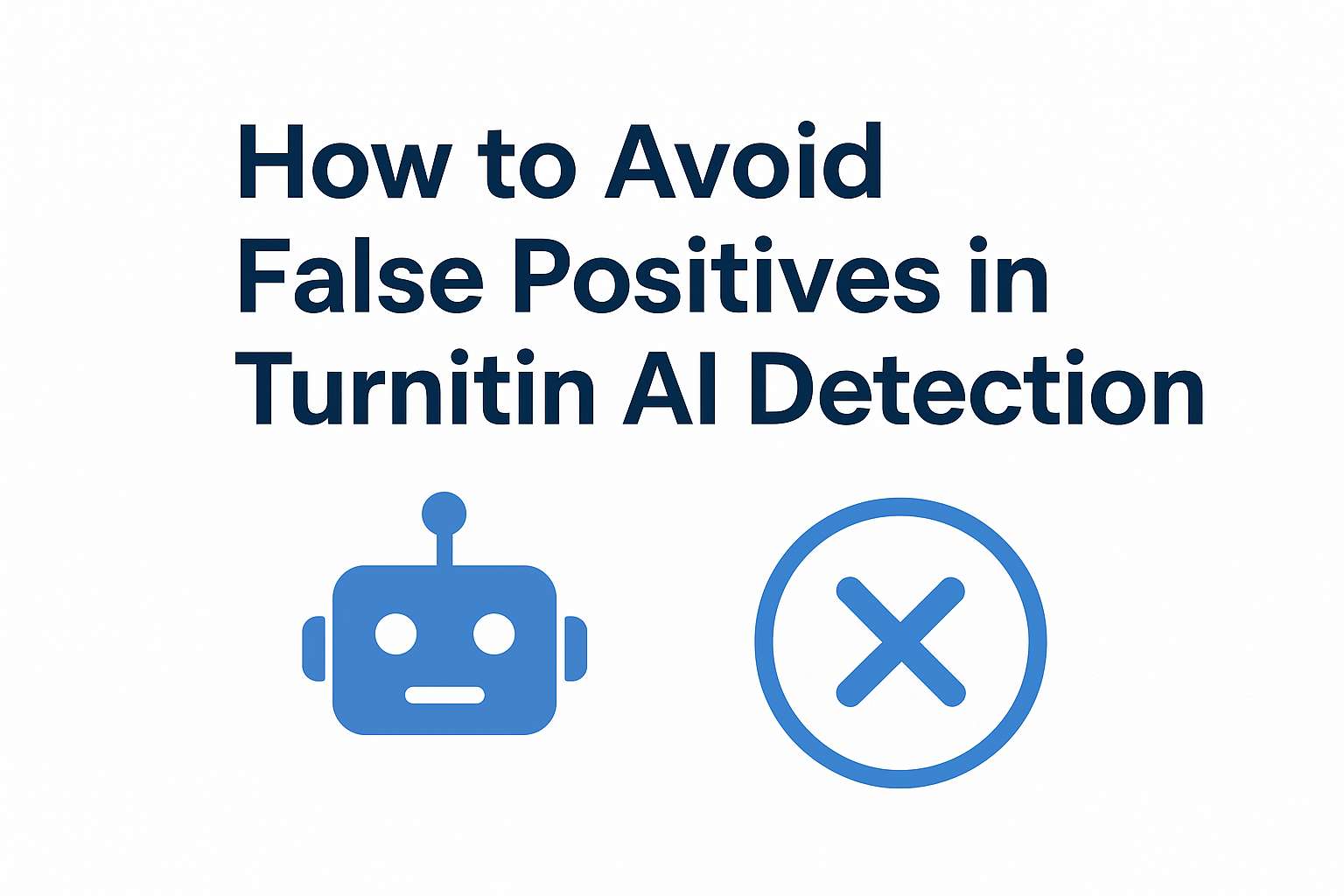
As AI-assisted writing tools continue to shape how students draft essays, universities have increasingly adopted Turnitin’s AI Writing Detection as part of academic integrity review. While the tool is influential, it is not flawless—human-written text can sometimes be mistakenly flagged as “AI-generated.”To help you minimize the risk of false positives, this guide offers clear, practical steps you can take before submitting your work.
✅ Why False Positives Happen in AI Detection
Turnitin’s AI detector evaluates writing patterns, not intent.
That means you can receive an AI flag even when:
You wrote everything yourself
You did extensive Grammarly or paraphraser edits
Your writing style is naturally uniform
English is not your first language
You followed rigid academic templates
False positives happen because AI detection models look for statistical traces, not authorship proof.Understanding these patterns is key to avoiding unintentional flags.
✅ 1. Add Natural Variation to Your Sentence Structure
AI-generated text tends to maintain:
Even rhythm
Similar sentence length
Predictable transitions
Human writing typically shows more inconsistency.
✅ How to fix it
Mix long analytical sentences with short, direct ones
Use different transition styles instead of repeating the same connectors
Break large paragraphs into more dynamic structures
This reduces the appearance of algorithmic uniformity.
✅ 2. Avoid Overusing Grammar Tools and Paraphrasers
Excessive use of:✅ Grammarly
✅ Quillbot
✅ Auto-rewrite tools
✅ Translation software…can unintentionally “smooth out” your writing, causing it to resemble AI patterns.
✅ How to fix it
Limit edits to grammar errors, not whole-paragraph rewrites
Rewrite final sentences manually
Keep your natural voice—even if slightly imperfect
Turnitin values authenticity, not perfection.
✅ 3. Add Context, Examples, and Personal Reasoning
AI often struggles with:
Real lived experiences
Field-specific insights
Personal reflections
Contextual reasoning
Adding these elements helps anchor your writing in real human logic.
✅ How to fix it
Include:
Small anecdotes
Your thought process
Specific course materials
Direct observations
These details significantly reduce AI probability scores.
✅ 4. Avoid Template-Style Introductions and Conclusions
Many AI systems generate generic academic phrases like:
“In today’s society…”
“This essay will explore…”
“In conclusion, it is clear that…”
Turnitin frequently flags such openings—even when humans write them.
✅ How to fix it
Start with:
A striking fact
A concept from your reading
A situational context
Your thesis directly
Make your intro specific, not formulaic.
✅ 5. Keep a Clear Writing Process Trail
If Turnitin flags your work, being able to show your writing process often resolves concerns immediately.
✅ Save:
Draft versions (Google Docs revision history works best)
Outlines or mind maps
Research notes
Screenshots of early drafts
Bibliography building steps
A transparent process is your strongest protection against wrongful accusations.
✅ 6. Don’t Let AI Write Entire Paragraphs—Even If You Edit Them
Editing AI-generated text can still leave detectable traces:
Repetitive structure
Low burstiness
Synthetic transitions
If using AI during brainstorming, ensure you fully rewrite the final output.
✅ Safe workflow
Use AI for idea generation only
Write your paragraphs manually
Use grammar correction sparingly
Add personal reasoning and context to every section
This keeps your final submission authentically human.
✅ 7. Read Your Work Aloud Before Submitting
Humans catch unnatural flow better than algorithms.If something feels:
Too even
Too polished
Too stiff
Too monotone
…it may trigger AI detection.Reading aloud helps you naturally break overly AI-like pacing.
✅ 8. Avoid Over-Optimizing for “Perfect Academic Tone”
Ironically, trying too hard to sound “academic” can backfire and look AI-generated.
Real academic writing has nuance, variation, and human reasoning—not robotic perfection.
✅ How to fix it
Use discipline-specific language
Include your analytical voice
Allow minor stylistic imperfections
Avoid repetitive phrasing
Human writing is thoughtful—not uniform.
✅ Final Checklist Before You Submit
✅ Did you mix sentence lengths and rhythms?
✅ Did you avoid whole-paragraph paraphrasing tools?
✅ Does your writing include personal reasoning or lived context?
✅ Did you avoid generic academic templates?
✅ Do you have drafts and notes saved (as evidence if needed)?
✅ Does your writing sound like you—not a machine?This simple checklist significantly lowers false-positive AI scores on Turnitin.
✅ Final Thoughts
Turnitin’s AI detector is a helpful tool, but it is not perfect. False positives can and do occur, often due to writing style or over-polished text rather than misconduct. By understanding how AI detection models analyze writing, and by applying the strategies above, you can confidently submit your work with minimized risk.
About the Author
Fiona Zhang is a content strategist and editor specializing in AI literacy, academic integrity, and digital writing research. She focuses on creating practical, accessible guides to help students and educators navigate emerging technologies responsibly.
Learn more about her work at:
👉 https://blog.aceessay.ai/Fiona-Zhang/